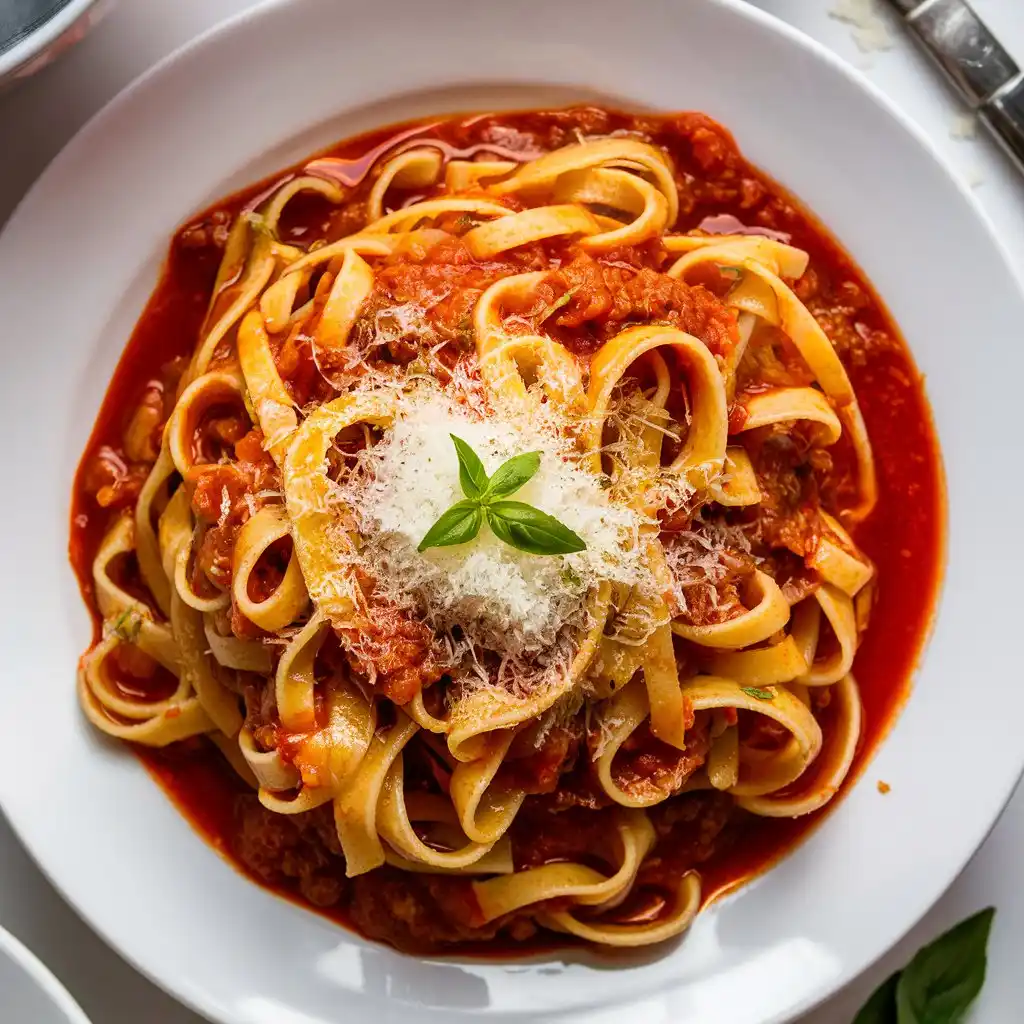Introduction
Mafaldine pasta, also known as reginette or “little queens,” is a unique and elegant pasta that stands out in both appearance and taste. Its ribbon-like shape, with wavy edges reminiscent of lace, adds a touch of sophistication to any dish. This regal pasta is named after Princess Mafalda of Savoy, reflecting its royal and refined character.
Not only is mafaldine visually stunning, but it’s also incredibly versatile. Its broad, flat surface and textured edges make it perfect for holding onto sauces, whether creamy, tomato-based, or herbaceous. This makes it a favorite among chefs and home cooks alike who are looking to elevate their pasta dishes.
Originating in Italy, mafaldine pasta is deeply rooted in the country’s rich culinary traditions. While it may not be as well-known as spaghetti or penne, its unique shape has earned it a special place in the world of pasta. Whether you’re preparing a simple weeknight dinner or a gourmet feast, mafaldine pasta has the potential to transform a meal into a memorable culinary experience.
In this blog post, you’ll discover:
- The history and unique qualities of mafaldine pasta.
- Tips for cooking it to perfection.
- A variety of easy and delicious recipes to try.
- The best sauces and pairings to bring out its full potential.
Let’s dive into the world of mafaldine pasta and explore how this ribbon-shaped delicacy can elevate your cooking game!
What is Mafaldine Pasta?
Origin and History
Mafaldine pasta, sometimes referred to as reginette or “little queens,” is a pasta with an illustrious history rooted in Italian culture. It was created in honor of Princess Mafalda of Savoy, a beloved member of the Italian royal family in the early 20th century. The pasta’s regal name and intricate design reflect the elegance and grace associated with its namesake.
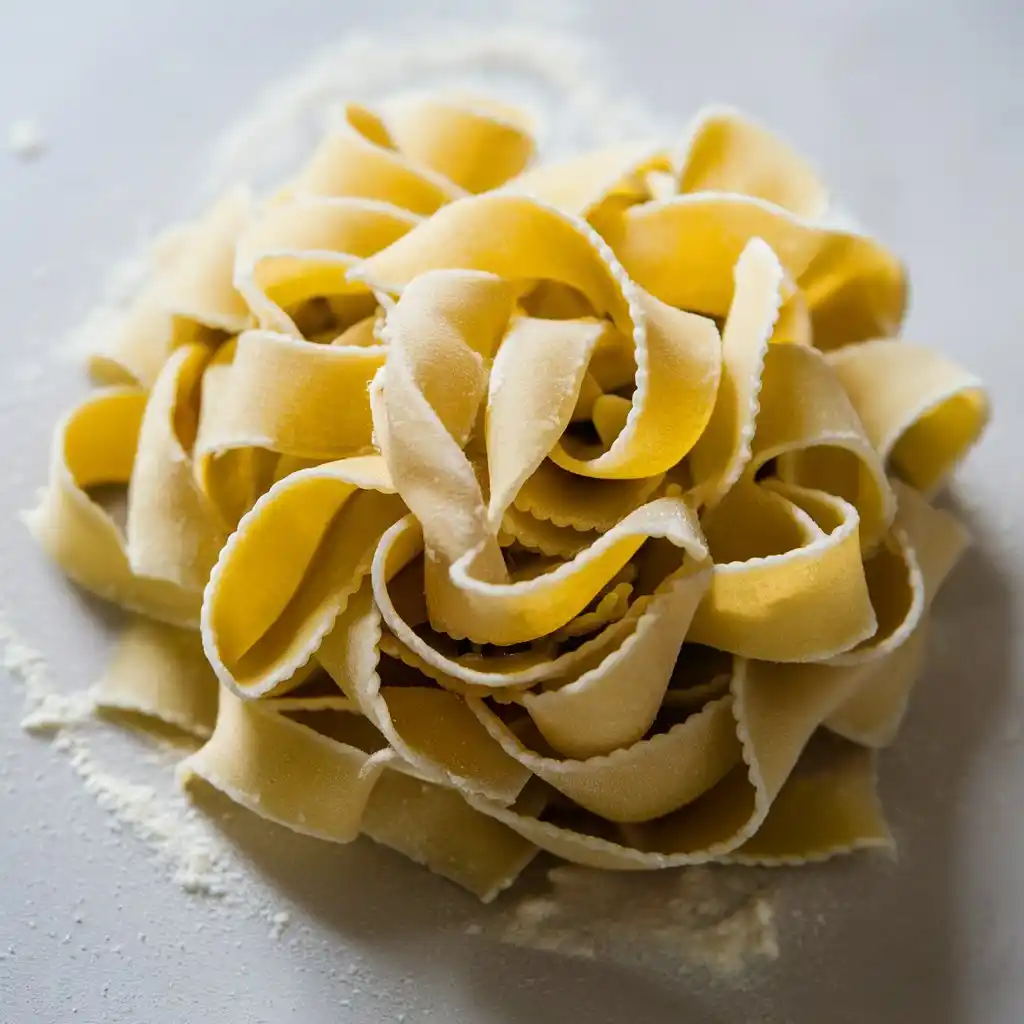
Historically, mafaldine was celebrated as a special pasta, often served during significant events or family gatherings. While it may not be as ubiquitous as spaghetti or fettuccine, its unique qualities have earned it a loyal following among pasta enthusiasts.
Unique Shape and Texture
Mafaldine is characterized by its long, flat ribbons with ruffled edges on both sides. This distinctive shape is not just for aesthetics; it plays a functional role in enhancing the dining experience. The wavy edges of the pasta create a textured surface that holds onto sauces exceptionally well, ensuring every bite is rich with flavor.
The shape of mafaldine also makes it versatile for a wide range of dishes. Its broader surface area allows it to pair beautifully with hearty sauces like Bolognese or creamy Alfredo, while its elegant design makes it perfect for lighter, more delicate preparations, such as garlic-butter or lemon-basil sauces.
Where to Find Mafaldine Pasta
Although mafaldine pasta may not be as commonly found as other types like penne or linguine, it is readily available in specialty Italian markets and online retailers. Brands like De Cecco, Barilla, and Garofalo often include mafaldine in their offerings.
- Pro Tip: Look for imported Italian brands for the best quality and authentic flavor.
If you’re feeling adventurous, you can even make homemade mafaldine pasta using a pasta machine and a fluted cutter to create the signature ruffled edges.
Why Choose Mafaldine?
What sets mafaldine apart is its combination of visual appeal, rich history, and culinary versatility. Whether you’re serving a hearty family meal or impressing dinner guests, mafaldine brings a touch of sophistication to the table. It’s the perfect choice for those who want to elevate their pasta game with a less common but highly rewarding option.
Tips for Cooking Mafaldine Pasta Perfectly
Cooking mafaldine pasta to perfection requires attention to detail, as its unique shape and texture call for specific techniques to ensure the best results. Here’s a comprehensive guide to help you make the most of this exquisite pasta:
1. Choosing the Right Pot and Water Ratio
Mafaldine pasta’s long ribbons and wavy edges mean it needs ample space to cook evenly.
- Use a Large Pot: Choose a large, wide pot to prevent the pasta from sticking together or breaking.
- Plenty of Water: Use at least 4–6 quarts of water per pound of pasta to allow it to move freely while boiling. This ensures even cooking and helps maintain the integrity of the delicate ruffles.
2. Perfecting the Cooking Time
Mafaldine pasta is best enjoyed when cooked al dente, meaning it should be firm to the bite without being undercooked.
- Follow Package Instructions: Each brand may have a slightly different recommended cooking time, so check the packaging for guidance.
- Taste Test: Begin checking the pasta a minute or two before the recommended time. Mafaldine’s ruffled edges may cook slightly faster than the flat center, so ensure the entire ribbon is consistently tender.
3. Salt and Oil Tips
Seasoning your pasta water and knowing when to use oil are critical steps for achieving flavorful and well-textured mafaldine.
- Salt the Water Generously: Add about 1–2 tablespoons of salt per gallon of water. The pasta absorbs this salt during cooking, enhancing its flavor.
- Skip the Oil: Contrary to common practice, adding oil to the boiling water can prevent sauces from sticking to the pasta. Focus on stirring occasionally to keep the ribbons from clumping.
4. Draining and Reserving Pasta Water
The way you handle the pasta after it’s cooked can make or break your dish.
- Reserve Pasta Water: Before draining, save a cup of the starchy cooking water. This can be added to your sauce to help it adhere to the mafaldine and create a silky texture.
- Avoid Over-Draining: Don’t rinse the pasta after draining, as the starch on the surface is crucial for helping the sauce cling to the ribbons.
5. Tossing and Serving
Once drained, mafaldine pasta should be tossed with your sauce immediately to prevent it from drying out or clumping.
- Toss Gently: Use tongs or a large pasta fork to mix the pasta with the sauce, being careful not to break the ribbons.
- Serve Fresh: Mafaldine is best enjoyed right after cooking, as it retains its texture and shape better when fresh.
Bonus Tips for Success
- Use the Right Sauce: Creamy and chunky sauces work wonderfully with mafaldine’s ruffled edges. Avoid overly thin sauces that may slide off.
- Pair with Quality Ingredients: Since mafaldine pasta has a luxurious feel, pair it with fresh, high-quality ingredients like extra virgin olive oil, freshly grated Parmesan, or premium marinara.
- Cook in Batches: If preparing a large quantity, cook the pasta in batches to ensure it cooks evenly.
By following these tips, you can master the art of cooking mafaldine pasta and create dishes that not only taste amazing but also showcase the beauty of this unique pasta.
Easy and Delicious Mafaldine Pasta Recipes
Mafaldine pasta’s versatility and elegance make it a fantastic choice for creating a variety of flavorful dishes. Here are some easy and delicious recipe ideas that highlight the unique texture and shape of this ribbon-like pasta.
1. Creamy Alfredo Mafaldine
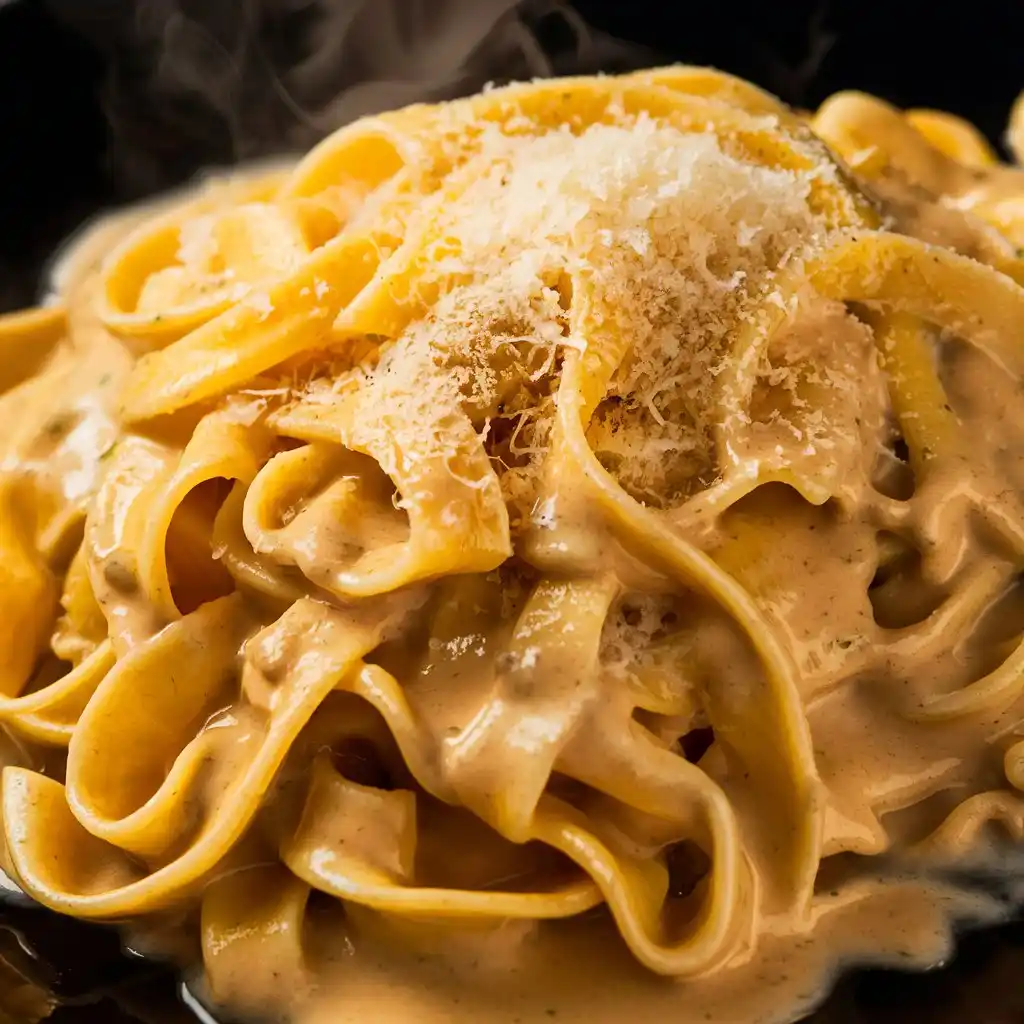
A rich and indulgent dish that’s perfect for a comforting dinner or a special occasion.
- Ingredients:
- Mafaldine pasta
- Heavy cream
- Unsalted butter
- Freshly grated Parmesan cheese
- Minced garlic
- Salt and pepper to taste
- Steps to Prepare:
- Cook mafaldine pasta until al dente and reserve some pasta water.
- In a pan, melt butter and sauté garlic until fragrant.
- Add heavy cream and simmer gently.
- Stir in Parmesan cheese and a splash of pasta water for a silky texture.
- Toss the cooked mafaldine into the sauce and coat evenly. Serve with freshly cracked pepper and extra Parmesan.
2. Classic Marinara with Mafaldine
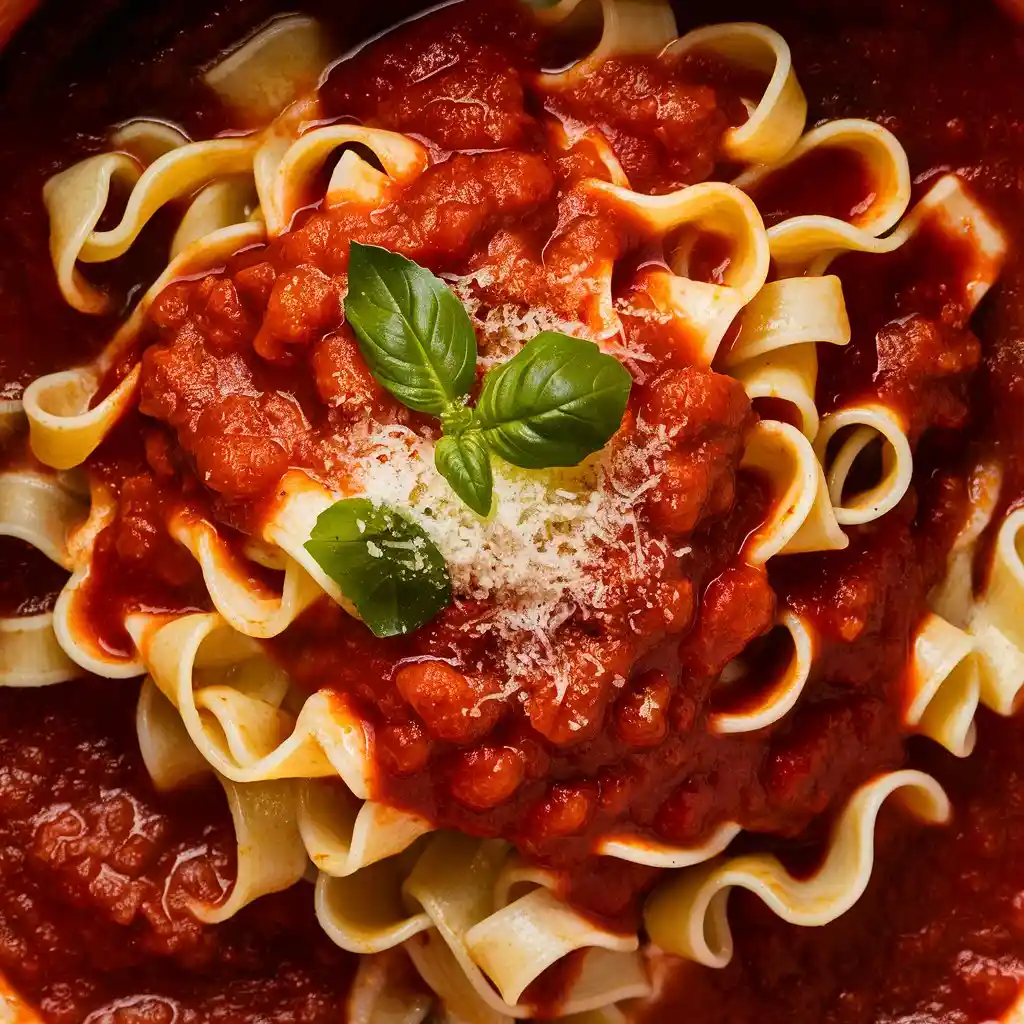
A timeless recipe that brings out the best of Italian flavors using simple, fresh ingredients.
- Ingredients:
- Mafaldine pasta
- Canned crushed tomatoes
- Olive oil
- Fresh basil leaves
- Minced onion and garlic
- Salt, pepper, and a pinch of sugar
- Steps to Prepare:
- Cook the pasta and set it aside.
- Heat olive oil in a pan and sauté onion and garlic until soft.
- Add crushed tomatoes, season with salt, pepper, and sugar, and let simmer for 15–20 minutes.
- Toss mafaldine pasta into the marinara sauce and mix gently. Garnish with fresh basil leaves before serving.
3. Mafaldine with Pesto Sauce
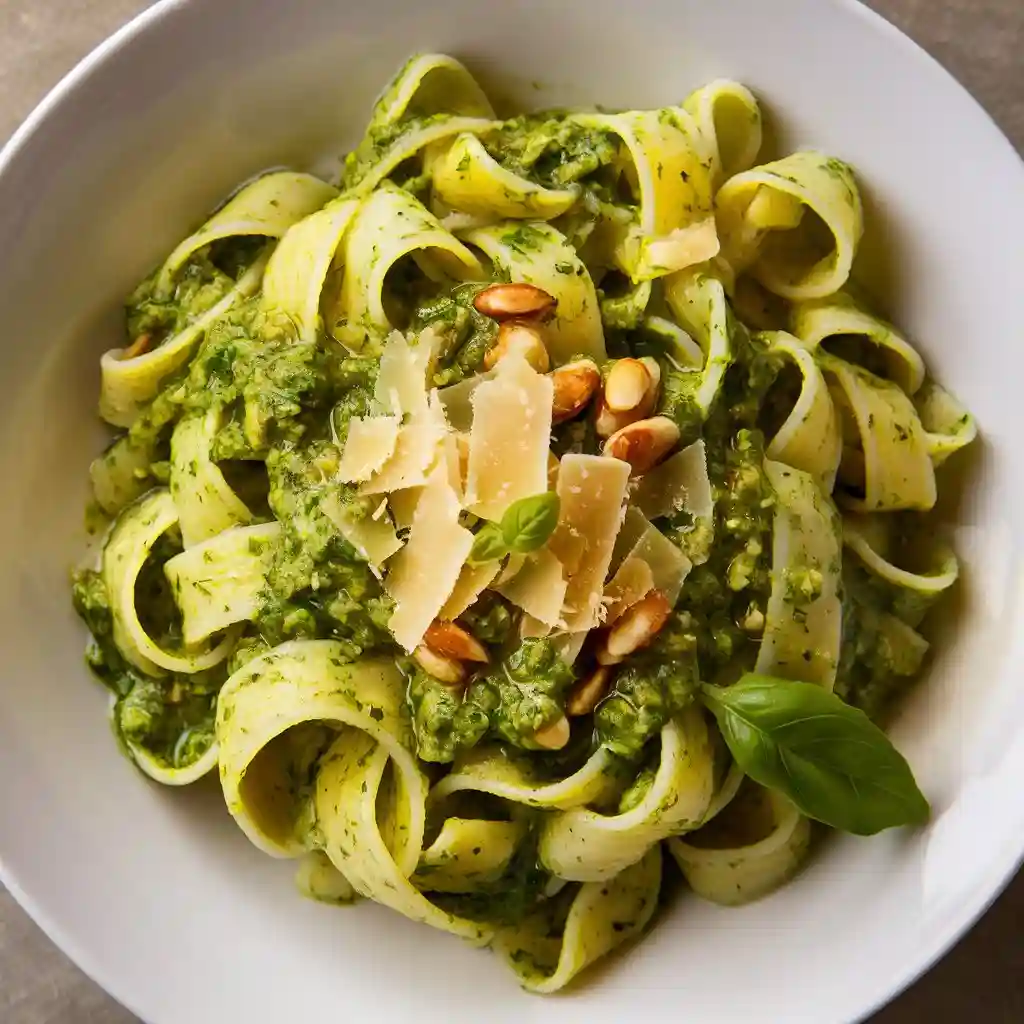
A vibrant, herbaceous dish that’s light yet packed with flavor.
- Ingredients:
- Mafaldine pasta
- Fresh basil leaves
- Pine nuts (toasted)
- Garlic cloves
- Grated Parmesan cheese
- Olive oil
- Salt and pepper
- Steps to Prepare:
- Blend basil, pine nuts, garlic, Parmesan, olive oil, salt, and pepper into a smooth pesto.
- Cook mafaldine pasta and reserve a small amount of pasta water.
- Toss the cooked pasta with pesto, adding a splash of reserved water for a creamy consistency.
- Serve with extra Parmesan and toasted pine nuts on top.
4. Seafood Mafaldine
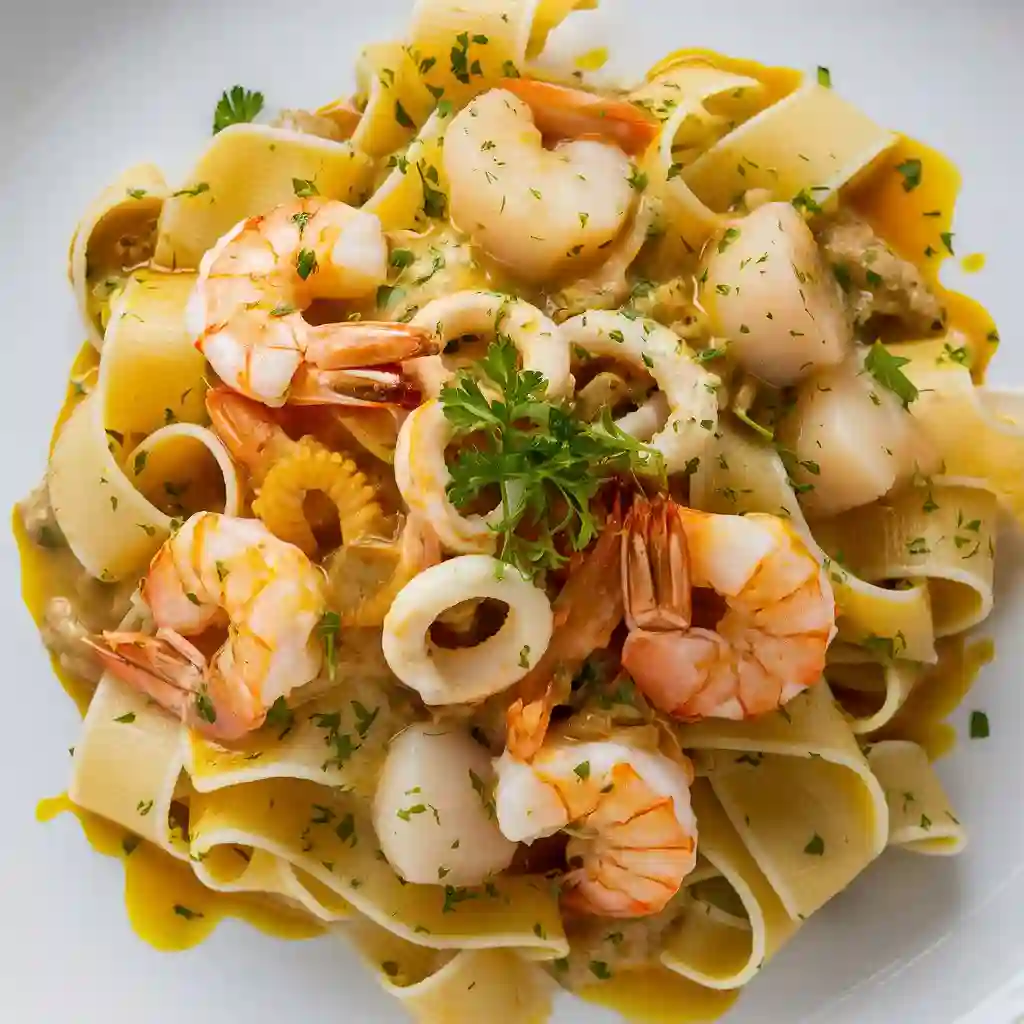
Elevate your meal with a light, seafood-infused pasta dish.
- Ingredients:
- Mafaldine pasta
- Shrimp or scallops (cleaned and deveined)
- Olive oil
- Garlic cloves (minced)
- White wine or lemon juice
- Fresh parsley
- Crushed red pepper flakes (optional)
- Steps to Prepare:
- Cook mafaldine pasta and set aside.
- Heat olive oil in a skillet and sauté garlic until golden.
- Add shrimp or scallops, cooking until just opaque.
- Deglaze the pan with white wine or lemon juice, then toss the pasta in the mixture.
- Sprinkle fresh parsley and red pepper flakes for a touch of heat before serving.
5. Mafaldine Bolognese
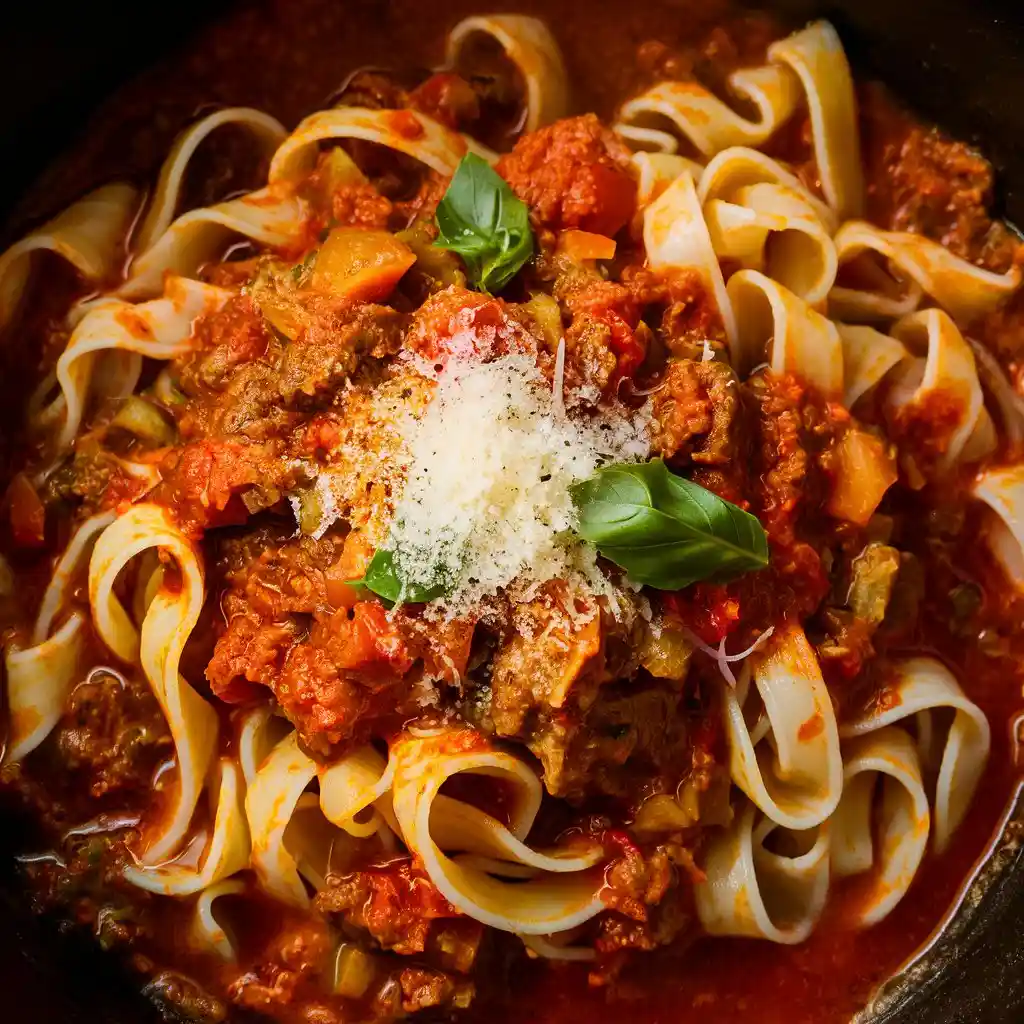
A hearty, meaty sauce that clings beautifully to the ruffled edges of mafaldine pasta.
- Ingredients:
- Mafaldine pasta
- Ground beef or pork
- Crushed tomatoes and tomato paste
- Onion, carrot, and celery (finely chopped)
- Red wine
- Olive oil
- Fresh thyme or bay leaves
- Salt, pepper, and a dash of nutmeg
- Steps to Prepare:
- Cook mafaldine pasta and reserve some pasta water.
- In a large pot, sauté onion, carrot, and celery in olive oil.
- Add ground meat and cook until browned.
- Stir in tomato paste, crushed tomatoes, and wine. Add herbs and simmer for 30 minutes.
- Toss cooked pasta into the Bolognese sauce and serve with grated Parmesan.
These recipes showcase the versatility of mafaldine pasta, making it an excellent choice for everything from weeknight meals to impressive dinner-party dishes. Each recipe highlights the pasta’s ability to hold onto sauces and deliver bold, satisfying flavors.
Best Sauces and Pairings for Mafaldine Pasta
Mafaldine pasta’s wide, flat ribbons with delicate ruffled edges make it a perfect canvas for various sauces and pairings. Its texture and shape allow it to hold both light and hearty sauces beautifully, offering versatility and sophistication in every bite. Here are some of the best sauces and pairings to elevate your mafaldine pasta dishes.
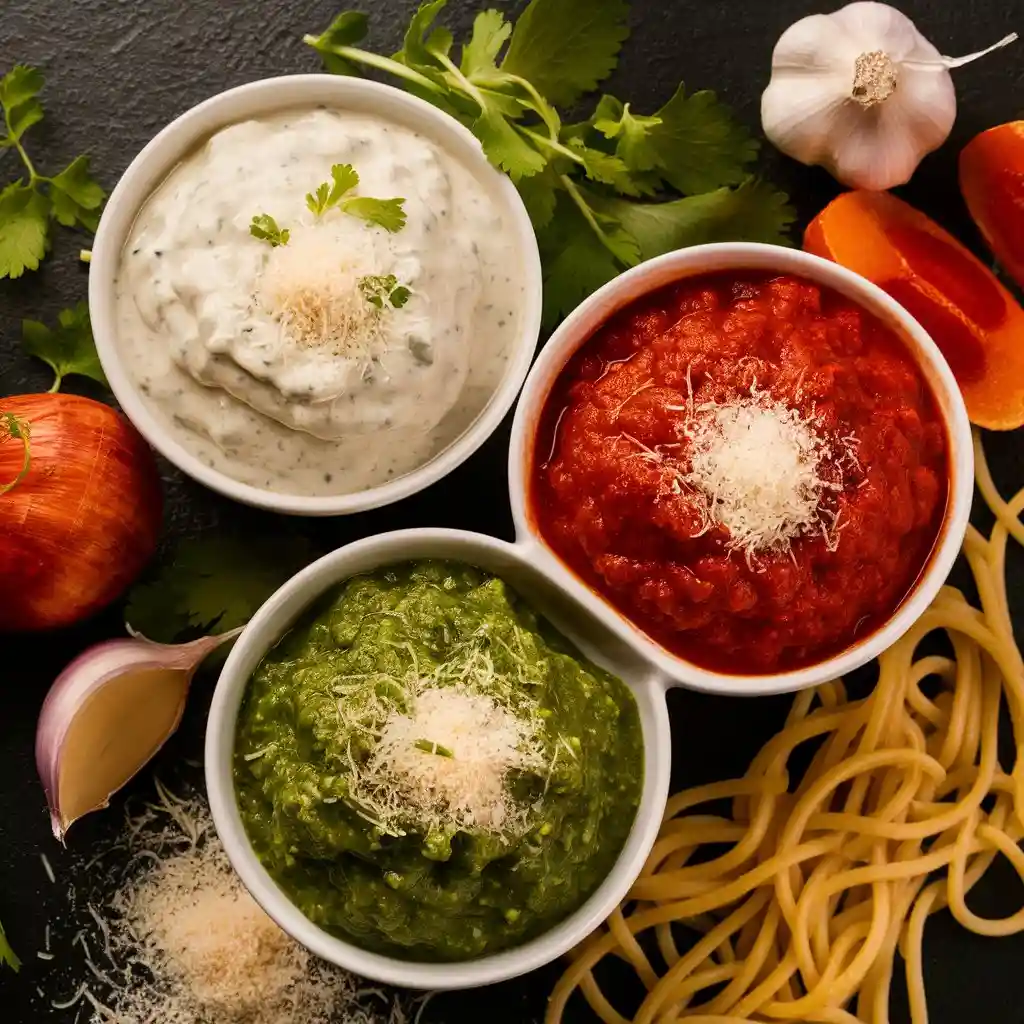
1. Rich Cream-Based Sauces
The luxurious texture of mafaldine pasta makes it a natural companion for creamy, indulgent sauces.
- Alfredo Sauce:
A classic combination of butter, cream, and Parmesan cheese. The sauce clings to the ruffled edges of mafaldine, creating a silky, satisfying dish. - Mushroom Cream Sauce:
Combine sautéed mushrooms, garlic, and heavy cream for an earthy and flavorful pasta dish. Adding a splash of white wine or a sprinkle of fresh thyme can elevate this sauce further. - Truffle Cream Sauce:
For a gourmet twist, mix truffle oil or truffle paste with cream, butter, and Parmesan. This luxurious pairing highlights the pasta’s elegant nature.
2. Tomato-Based Favorites
Tomato-based sauces bring vibrant flavors and a touch of acidity, perfectly balancing mafaldine’s hearty texture.
- Marinara Sauce:
A simple, rustic sauce made with crushed tomatoes, garlic, olive oil, and fresh basil. Its simplicity allows the texture of the pasta to shine. - Bolognese Sauce:
A rich and hearty meat-based sauce made with ground beef, pork, or veal. The robust flavors and thick consistency of Bolognese complement mafaldine’s broad ribbons. - Arrabbiata Sauce:
This spicy tomato sauce, infused with garlic and red pepper flakes, adds a bold kick to the dish, perfect for spice lovers.
3. Herbaceous and Light Options
For a lighter and more refreshing meal, herb-based or olive oil-based sauces work wonderfully with mafaldine pasta.
- Pesto Sauce:
Made from fresh basil, Parmesan, olive oil, garlic, and pine nuts, pesto’s vibrant green color and nutty flavor pair beautifully with mafaldine. - Garlic Butter Sauce:
A simple yet flavorful option, this sauce combines melted butter, minced garlic, and parsley. Add a squeeze of lemon for brightness. - Lemon-Basil Sauce:
Create a light, zesty sauce with lemon juice, olive oil, fresh basil, and a hint of Parmesan. This combination is perfect for summer meals.
4. Hearty and Unique Pairings
For those who love bold flavors and textures, consider these options:
- Seafood Sauces:
Pair mafaldine with shrimp, scallops, or clams in a garlic-butter or white wine sauce. The seafood’s natural sweetness enhances the pasta’s delicate edges. - Vegetable Medleys:
Combine mafaldine with roasted vegetables like zucchini, cherry tomatoes, or bell peppers. Toss with olive oil, garlic, and a sprinkle of feta or goat cheese. - Short Rib Ragu:
A slow-cooked, savory ragu made with tender short ribs and tomatoes is a decadent pairing for mafaldine’s sturdy ribbons.
5. Wine and Cheese Pairings
No pasta dish is complete without the right accompaniments. Pairing your mafaldine pasta with wine and cheese can enhance the meal even further.
- Wine Pairings:
- White Wines: A crisp Chardonnay or Sauvignon Blanc works well with creamy sauces.
- Red Wines: A medium-bodied Chianti or Sangiovese complements tomato-based sauces beautifully.
- Cheese Pairings:
- Grated Parmesan or Pecorino Romano is a classic choice for most mafaldine dishes.
- Creamy ricotta or mascarpone can add a luxurious texture when dolloped over the pasta.
By choosing the right sauce and pairing, you can highlight the unique qualities of mafaldine pasta and create a dish that’s as visually stunning as it is delicious. Experiment with these options to find your perfect mafaldine creation!
Why Mafaldine Pasta Deserves a Spot in Your Kitchen
Mafaldine pasta isn’t just another type of pasta—it’s a culinary gem that brings sophistication, versatility, and rich history to your table. If you’ve never tried cooking with mafaldine before, here’s why it deserves a permanent spot in your pantry:
1. Unique and Elegant Design
Mafaldine pasta is instantly recognizable for its ribbon-like shape and ruffled edges, which add a touch of elegance to any dish. Whether you’re serving it for a casual family dinner or a special occasion, its appearance alone elevates the presentation.
- A Feast for the Eyes: The intricate waves on each ribbon create a visual appeal that other pasta shapes can’t match.
- Perfect for Impressing Guests: Its distinct shape makes it a conversation starter and a way to showcase your creativity in the kitchen.
2. Incredible Sauce-Holding Ability
The textured, ruffled edges of mafaldine pasta are more than just decorative—they serve a functional purpose by holding onto sauces exceptionally well.
- Versatility with Sauces: Mafaldine can handle both delicate, light sauces like pesto and robust, hearty ones like Bolognese or ragu.
- Enhanced Flavor in Every Bite: The wide surface area ensures that every ribbon is coated evenly, delivering a burst of flavor with every mouthful.
3. Culinary Versatility
Mafaldine pasta’s adaptability makes it a must-have for home cooks and culinary enthusiasts alike.
- Pairs with Any Ingredients: From creamy Alfredo and savory marinara to seafood, vegetables, and truffle oil, mafaldine pairs beautifully with a wide variety of flavors.
- Ideal for All Occasions: Whether you’re preparing a quick weeknight dinner or a gourmet meal, mafaldine pasta can rise to the occasion with ease.
- Great for Leftovers: Its sturdy structure holds up well even when reheated, making it a perfect choice for meal prep or leftovers.
4. A Taste of Italian Tradition
Mafaldine is steeped in Italian history and culture, named after Princess Mafalda of Savoy. Cooking with mafaldine is a way to connect with Italy’s rich culinary heritage.
- Traditional Yet Unique: While less common than other types of pasta, mafaldine offers a blend of familiarity and novelty.
- Adds a Touch of Authenticity: Including mafaldine in your repertoire allows you to explore regional Italian dishes and experiment with traditional recipes.
5. Easy to Find and Prepare
While mafaldine may not be as ubiquitous as spaghetti or penne, it’s increasingly available in grocery stores, specialty shops, and online retailers.
- Accessible for Home Cooks: Many premium pasta brands, such as Barilla, Garofalo, and De Cecco, offer mafaldine, making it easy to find high-quality options.
- Simple to Cook: Despite its sophisticated appearance, mafaldine cooks just like any other pasta. With a few tips for boiling and tossing, you can achieve perfect results every time.
6. Elevates Everyday Meals
If you’re looking for a simple way to elevate your everyday meals, mafaldine is the answer.
- Transforms Basic Dishes: Even a basic sauce like garlic butter feels indulgent when paired with mafaldine’s ruffled edges.
- Perfect for Experimentation: Whether you’re trying new recipes or recreating classic dishes, mafaldine offers a creative outlet for culinary exploration.
By bringing mafaldine pasta into your kitchen, you’re not only adding a versatile ingredient to your pantry but also embracing a piece of culinary art. Its unique texture, adaptability, and ability to elevate simple ingredients make it a must-try for anyone passionate about cooking.
Conclusion
Mafaldine pasta is a remarkable addition to any home cook’s repertoire, offering a unique combination of elegance, versatility, and rich history. Its ruffled edges and wide ribbons make it a standout choice for a variety of recipes, from light and refreshing dishes to hearty, indulgent meals. By learning how to cook mafaldine pasta perfectly, choosing the right sauces and pairings, and experimenting with creative recipes, you can transform your meals into culinary masterpieces.
Celebrate the Beauty of Mafaldine Pasta
Unlike more common pasta shapes, mafaldine has a distinct charm that adds a touch of sophistication to your dining table. Whether you’re hosting a dinner party or preparing a comforting meal for your family, this pasta’s texture and appearance make it a showstopper.
Versatility Meets Tradition
Mafaldine pasta bridges the gap between classic Italian traditions and modern culinary innovation. Its ability to adapt to a wide range of sauces and ingredients ensures it will quickly become a favorite in your kitchen. From creamy Alfredo and robust Bolognese to seafood-infused creations, mafaldine shines in any dish, proving that great pasta doesn’t need to be complicated to be delicious.
Inspire Your Culinary Creativity
Cooking with mafaldine pasta is more than just making a meal—it’s an opportunity to express your creativity and explore new flavors. Its unique shape encourages you to think outside the box, experimenting with different textures, sauces, and ingredients to craft dishes that are as visually stunning as they are flavorful.
Invite Mafaldine Into Your Kitchen
Whether you’re a seasoned chef or a home cook looking to expand your pasta repertoire, mafaldine deserves a spot in your pantry. Easy to find, simple to prepare, and endlessly adaptable, it’s the perfect pasta for those who appreciate both tradition and innovation in the kitchen.
By incorporating mafaldine pasta into your cooking, you’re not just making dinner—you’re elevating it. From its royal origins to its unmatched versatility, mafaldine is more than just a type of pasta—it’s a culinary experience waiting to be explored.
Let mafaldine inspire your next dish, and savor the joy of cooking with one of Italy’s most elegant pasta shapes.
For a delightful recipe featuring mafaldine pasta, consider trying “Mafaldine Pasta Limone With Broccoli” from Grilled Cheese Social.

